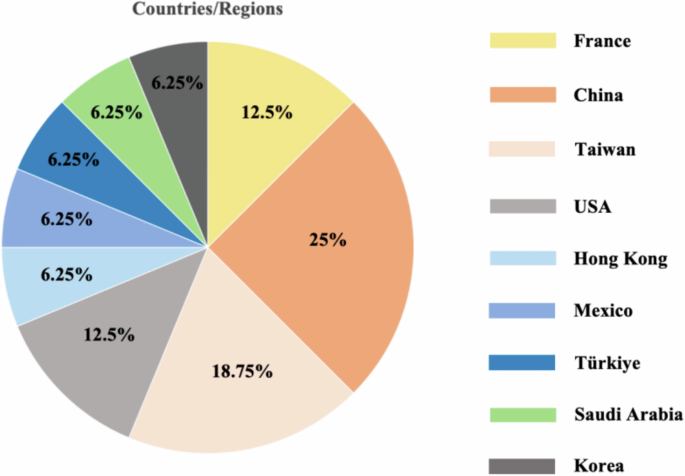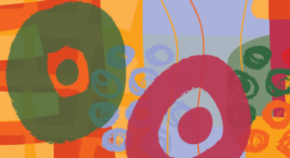## Level Up Your Learning: Can VR Unlock the Creative Potential of College Students?
Ever wished you could brainstorm ideas in a virtual cityscape, collaborate on a project in a fantastical world, or experience history firsthand? That’s the promise of virtual reality, and now, a new study published in Nature is exploring just how powerful this technology can be for nurturing the creative minds of college students.

Beyond the Headset: Understanding the Mechanisms Behind VR’s Creative Power
Immersion and Inspiration: How VR’s Sensory Engagement Fuels Creative Thinking

Virtual reality (VR) transcends the limitations of traditional learning environments by immersing users in richly detailed, interactive digital worlds. This heightened sense of presence, coupled with multi-sensory stimulation, profoundly impacts creative thinking. When students step into a VR environment, they are not merely observing information; they are actively participating in it, engaging all their senses and fostering a deeper level of understanding. This experiential learning approach allows students to explore concepts from multiple angles, make connections they might otherwise miss, and generate novel ideas that stem from their embodied experiences.
Breaking Down Barriers: Exploring VR’s Potential to Overcome Traditional Creative Limitations
Traditional creative exercises can often be constrained by physical limitations, access to resources, or the fear of judgment. VR breaks down these barriers by providing a safe and limitless space for experimentation. Imagine a student struggling to visualize a complex engineering design. VR empowers them to build and manipulate 3D models in a virtual space, exploring different configurations and iterating on their ideas without the constraints of physical materials or tools. Similarly, a student exploring historical events can step into a virtual reconstruction of ancient Rome, experiencing the city’s sights, sounds, and atmosphere firsthand, sparking their imagination and deepening their understanding.
The Social Spark: Analyzing the Role of Collaboration and Interaction in VR-Driven Creativity
Creativity thrives in collaborative environments, and VR offers unique opportunities for fostering social interaction and shared creative experiences. In a VR classroom, students can work together on projects, brainstorm ideas, and provide each other with feedback in a truly immersive and engaging way. Imagine a group of students designing a virtual city. Each student can contribute their ideas, build different aspects of the city, and interact with each other’s creations in real-time, fostering a sense of shared ownership and collective creativity.
Global Trends and Future Directions: VR’s Creative Potential on a Global Scale
A World of Learners: Examining the Geographic Distribution of VR Creativity Research
The research landscape for VR and creativity in higher education reveals a global interest in this burgeoning field. A recent systematic literature review, published in Nature, examined 368 articles related to VR and creativity from 2014 to 2023. The review found that while research is concentrated in Europe, Asia, and North America, publications are primarily driven by a specific group of countries. Asia takes the lead with 10 publications, highlighting a strong focus on educational innovation and technology integration in the region.
This trend is likely driven by factors such as rapid technological advancements, large-scale investments in educational technology, and a cultural emphasis on adopting cutting-edge tools to improve learning outcomes.
Looking Ahead: Identifying the Key Challenges and Opportunities for VR in Fostering Creativity
Despite the promising potential of VR, several challenges remain to be addressed before it can be fully realized as a transformative tool for creativity in higher education. Cost remains a significant barrier, particularly for institutions with limited budgets. The development and implementation of high-quality VR content requires significant financial investment, and widespread adoption necessitates affordable hardware solutions accessible to all students.
Furthermore, ethical considerations surrounding data privacy, accessibility for students with disabilities, and the potential for overuse or addiction need careful consideration and mitigation strategies. Addressing these challenges will be crucial for ensuring that VR technology is used responsibly and equitably to empower all learners.
The Future of Learning: Envisioning a World Where VR Amplifies Creative Expression in Higher Education
As VR technology continues to evolve, its potential to revolutionize creative learning in higher education is immense. Imagine a future where students can collaborate on virtual projects with peers around the globe, explore historical events through immersive simulations, or design innovative solutions to real-world challenges in a virtual sandbox. VR has the power to unlock new levels of creativity, collaboration, and engagement, empowering students to become the innovators and problem-solvers of tomorrow.
Conclusion
## Stepping into the Future of Creativity
This systematic literature review by Nature paints a compelling picture of the transformative potential of virtual reality (VR) technology in nurturing creativity within college students. The research highlights how VR’s immersive and interactive nature can break down traditional learning barriers, fostering collaborative brainstorming, encouraging risk-taking in ideation, and providing a playground for exploring innovative solutions in seemingly limitless virtual environments. By analyzing existing studies, the review underscores the positive impact of VR on various creative tasks, from artistic expression to problem-solving, demonstrating its ability to stimulate imagination and inspire out-of-the-box thinking.
The implications of this research are profound. As higher education institutions seek innovative ways to equip students with the creative skills essential for the future workforce, VR emerges as a powerful tool. Imagine classrooms where students collaborate on architectural designs, immerse themselves in historical settings to spark new research ideas, or experiment with interactive storytelling in a virtual world. The potential for personalized learning experiences, tailored to individual creative needs and strengths, further expands the possibilities. This exploration of VR’s creative potential is just the beginning. As technology evolves, we can expect even more sophisticated applications that blur the lines between imagination and reality, paving the way for a future where creativity knows no bounds.
The question isn’t whether VR will reshape the landscape of creativity, but how we will harness its transformative power to unlock the boundless potential within each student.